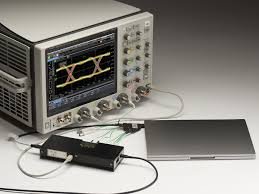
The Internet of Things (IoT) is revolutionizing industries—from smart homes and wearable devices to industrial automation and healthcare monitoring. As the number of connected devices skyrockets, ensuring the reliability, security, and performance of IoT devices is more critical than ever. IoT device testing plays a pivotal role in this ecosystem, acting as the foundation for trustworthy and efficient deployments. This guide provides a comprehensive look at IoT device testing, its types, challenges, and best practices.
What is IoT Device Testing?
IoT device testing is the process of validating the functionality, security, connectivity, interoperability, and performance of an IoT device. Since these devices typically consist of sensors, actuators, communication modules, firmware, and software applications, testing is a multidisciplinary task that spans both hardware and software validation.
Why Is IoT Device Testing Important?
-
Security Assurance: IoT devices are often a target for cyberattacks. Vulnerability testing helps in identifying and fixing security gaps before deployment.
-
Reliability and Performance: Devices may need to function in harsh or remote environments. Rigorous testing ensures durability and stable operation under all expected conditions.
-
Regulatory Compliance: Devices must comply with standards like FCC, CE, RoHS, or ISO. Testing ensures that all regulatory benchmarks are met.
-
User Satisfaction: A malfunctioning smart thermostat or wearable tracker can quickly damage customer trust. Testing helps ensure a smooth user experience.
Types of IoT Device Testing
-
Functional Testing
-
Validates the core features of the device.
-
Example: Ensuring a smart lock opens/closes with the mobile app.
-
-
Connectivity Testing
-
Ensures stable communication over Wi-Fi, Bluetooth, Zigbee, LoRa, NB-IoT, etc.
-
Involves testing under different network conditions.
-
-
Security Testing
-
Identifies vulnerabilities like weak encryption, unsecured APIs, and backdoors.
-
Includes penetration testing, data privacy validation, and firmware verification.
-
-
Performance Testing
-
Measures how well the device performs under stress, load, and real-world scenarios.
-
Includes latency, data throughput, and power consumption.
-
-
Interoperability Testing
-
Tests device compatibility with other devices, platforms, and ecosystems.
-
Example: A smart light that should work with Google Home, Alexa, and Apple HomeKit.
-
-
Compliance Testing
-
Verifies adherence to standards like FCC Part 15, CE Marking, EMC/EMI compliance, and wireless protocol certifications.
-
-
Usability Testing
-
Focuses on user experience, ease of setup, and intuitive design.
-
-
OTA (Over-the-Air) Testing
-
Ensures that firmware updates can be securely and reliably pushed to devices in the field.
-
Key Challenges in IoT Device Testing
-
Diverse Ecosystem: The multitude of communication protocols, hardware platforms, and operating environments makes standardization difficult.
-
Power Constraints: Battery-operated devices must be tested for power efficiency without compromising performance.
-
Scalability: Devices need to perform reliably in large-scale deployments involving thousands of nodes.
-
Security Complexity: From cloud to endpoint, the attack surface is large and complex to test thoroughly.
-
Environmental Conditions: IoT devices may need to function in variable temperatures, humidity, or vibration-prone conditions.
Best Practices for IoT Device Testing
-
Adopt a Layered Testing Approach
-
Test at device, network, application, and cloud levels for full coverage.
-
-
Use Automated Testing Tools
-
Leverage frameworks and test automation tools for regression and performance testing.
-
-
Test Under Real-World Conditions
-
Simulate actual usage environments (e.g., intermittent connectivity, extreme temperatures).
-
-
Focus on Security from Day One
-
Conduct threat modeling and security testing during early development stages.
-
-
Plan for OTA Updates
-
Ensure OTA updates can be rolled back safely and do not brick devices.
-
-
Include Interoperability Tests in CI/CD
-
Use emulators, cloud platforms, and real devices to test integration with popular ecosystems.
-
-
Document Everything
-
Detailed logs and test reports are crucial for debugging and compliance audits.
-
Popular Tools and Platforms for IoT Testing
-
Wireshark: For packet capture and network analysis.
-
JTAG/SWD Debuggers: For low-level hardware debugging.
-
Postman: For testing IoT APIs.
-
IoTIFY / Eclipse IoT: Cloud-based platforms for simulating IoT networks.
-
Burp Suite / OWASP ZAP: For IoT security testing.
Conclusion
As the IoT landscape grows more complex, the importance of thorough and reliable device testing cannot be overstated. From ensuring seamless user experiences to meeting regulatory demands and safeguarding against cyber threats, testing is the cornerstone of any successful IoT deployment. Companies that invest in robust IoT device testing frameworks not only minimize failures but also build lasting trust with their users.
Whether you’re a startup launching a new smart gadget or an enterprise deploying an industrial IoT solution, your path to market success begins with bulletproof IoT testing.

